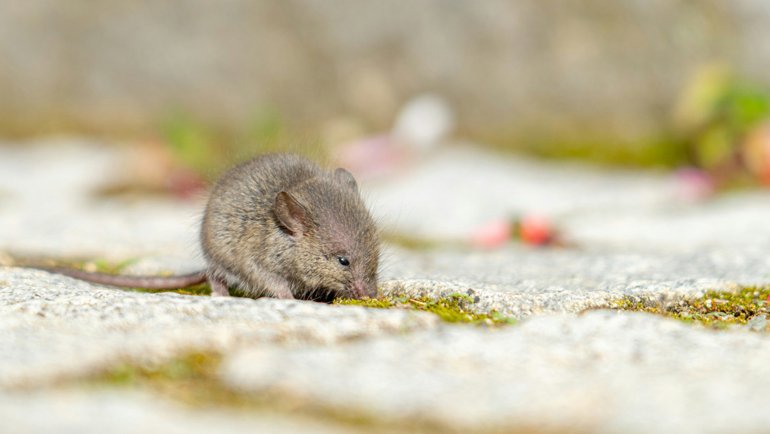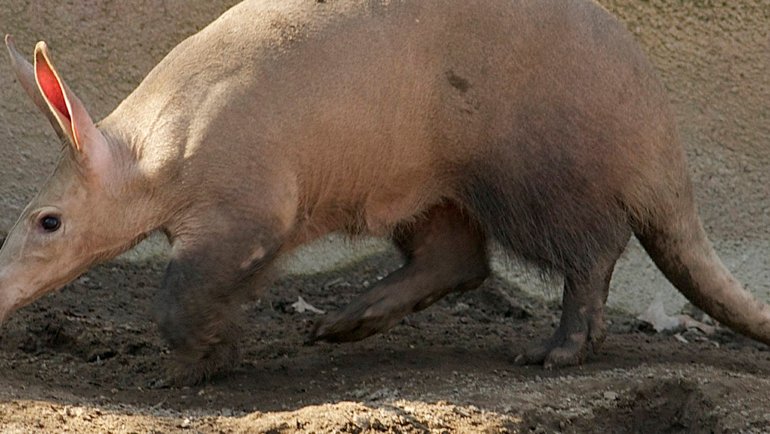Welcome to the fascinating world of the bongo, an elusive and eye-catching antelope with striking auburn fur and elegant spiraled horns. As one of the largest forest antelopes, bongos are renowned for their shyness and exceptional beauty.
This fact sheet delves deep into the life of the bongo, from its taxonomy to its behavior, diet, and conservation status, offering an in-depth look at this remarkable creature.
The Bongo at a Glance
Classification
| Kingdom: | Animalia |
| Phylum: | Chordata |
| Class: | Mammalia (Mammals) |
| Order: | Artiodactyla |
| Family: | Bovidae |
| Genus: | Tragelaphus |
| Species: | T. eurycerus |
| Subspecies: | T. e. eurycerus (Mountain Bongo), T. e. isaaci (Lowland Bongo) |
Essential Information
| Average Size: | 7.9–8.9 feet (2.4–2.7 meters) length including tail |
| Average Weight: | 485–880 pounds (220–400 kg) |
| Average Lifespan: | Up to 20 years |
| Geographical Range: | Central and West African forests |
| Conservation Status: | Near Threatened (IUCN Red List) |
Species and Subspecies
The bongo antelope is primarily divided into two subspecies: the Eastern Bongo or Mountain Bongo (Tragelaphus eurycerus eurycerus) and the Western Bongo or Lowland Bongo (Tragelaphus eurycerus isaaci). While both subspecies share common features such as auburn fur and white stripes, there are some distinctions:
- Eastern/Mountain Bongo: This subspecies is found in the high-altitude forests of Kenya and is considered critically endangered. They generally have darker fur and more vivid white stripes compared to their lowland counterparts.
- Western/Lowland Bongo: Occupying a broader range of forests across Central and West Africa, the Lowland Bongo is less endangered but still faces threats from habitat loss and hunting. They tend to have lighter fur and less distinct white markings.
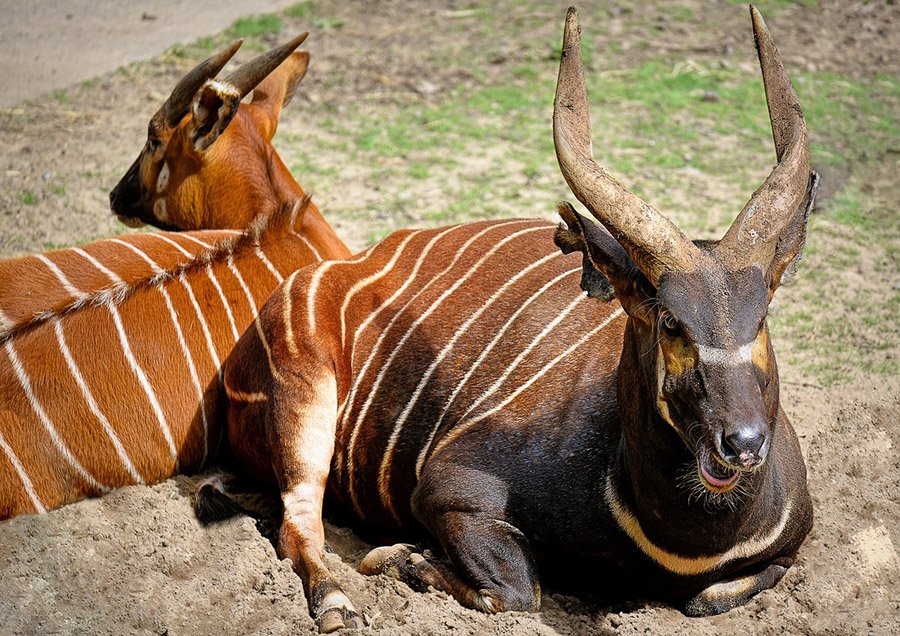
Description
The bongo is a captivating sight with its rich auburn to chestnut-brown coat adorned with white stripes and spots. These markings serve as excellent camouflage in their densely vegetated habitats.
Bongos have a distinctively long face, large ears, and striking, spiraled horns that can grow up to 40 inches (about 1 meter) long. The horns are not just decorative; they are used for navigating through dense forests and for self-defense against predators.
As for sexual dimorphism, both males and females have horns, but those of the males are generally larger and more spiraled. Additionally, males are typically larger and heavier than females.
A male bongo can weigh up to 880 pounds (400 kg), whereas females usually weigh around 485 pounds (220 kg). Males often have darker coats and a mane of longer hair along their back, setting them apart from females.
Habitat and Distribution
Bongos are native to the rainforests of Central and West Africa, particularly in countries like Kenya, Congo, and the Central African Republic. While Mountain Bongos prefer high-altitude bamboo forests,
Lowland Bongos are more versatile and can be found in lowland tropical rainforests, swamps, and even savannahs. These habitats provide not only the vegetation they feed on but also sufficient cover to hide from predators.
Unfortunately, their habitats are being increasingly threatened by logging, agriculture, and human settlement.
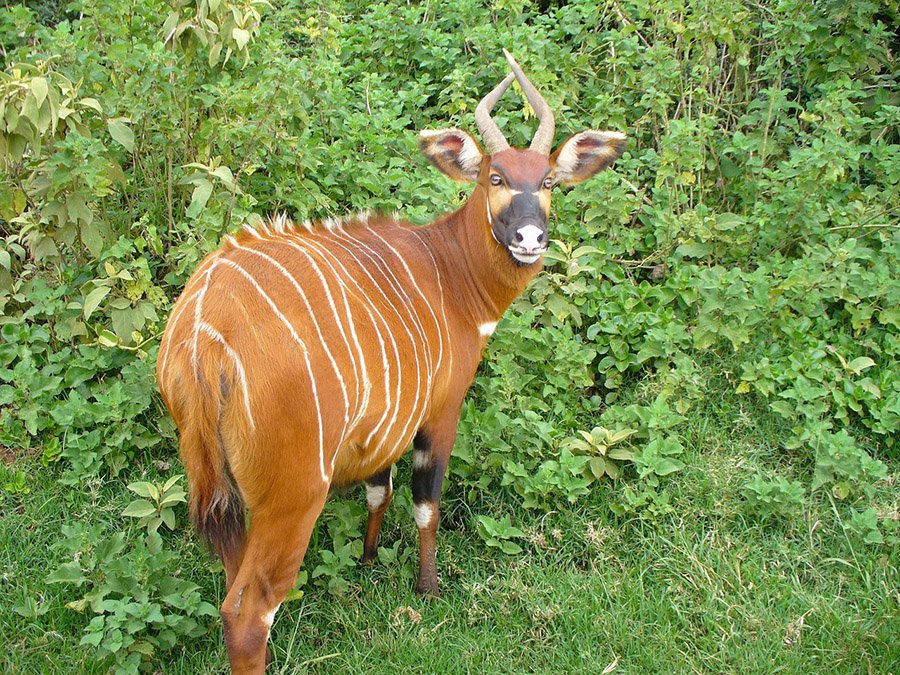
Behavior
Bongos are generally elusive, shy, and predominantly nocturnal creatures. During the day, they often lie hidden in dense thickets, becoming active in the late afternoon and throughout the night to forage. Bongos are known to be good swimmers and may traverse rivers or swamps in search of food.
Socially, bongos are not territorial and tend to live in small, loose groups. A typical group consists of females and their young, while adult males are usually solitary and join groups only during the mating season. Each group has a hierarchical structure determined by age and size, especially among females.
Communication among bongos is limited but effective, consisting mainly of tactile interactions and vocalizations like grunts and moans. They also communicate through olfactory cues, leaving scent markings from their preorbital glands on trees and leaves to signal their passage.
Overall, the bongo’s elusive nature and striking appearance make it one of Africa’s most intriguing and admired antelopes, although this has also made them a target for trophy hunters, adding to the challenges they face for survival.
Diet and Feeding Behavior
Bongos are primarily herbivorous, feeding on a diet that consists of leaves, bark, roots, fruits, and grasses. Their elongated tongue allows them to efficiently strip leaves off branches and their strong molars help in breaking down tough vegetation.
Interestingly, they are known to consume clay and burned wood, a behavior believed to be related to mineral intake. Despite their bulk, bongos are surprisingly agile and may stand on their hind legs to reach higher foliage, offering an interesting contrast to their otherwise secretive behavior.
Predators
Due to their large size, adult bongos have few natural predators, although they are not entirely safe. Leopards and lions are known to prey on bongos, but the primary threats often come from humans in the form of hunting and habitat loss. Y
oung bongos are more susceptible to predation and can fall victim to pythons, hyenas, and other medium-sized carnivores. Their natural camouflage and tendency to lie low during the day help them avoid detection, but their survival is increasingly threatened by human activities.
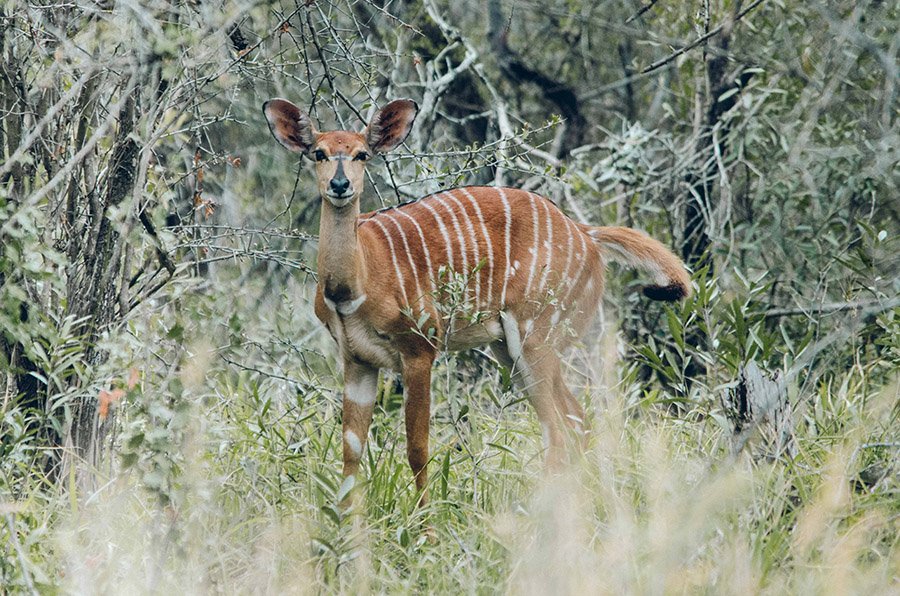
Reproduction and Life Cycle
Bongos are polygynous animals, meaning one male will typically mate with multiple females. Mating season occurs throughout the year, although a peak is often observed during the rainy seasons.
After a gestation period of about 9 months, a female bongo gives birth to a single calf. Newborn bongos weigh approximately 40-50 pounds (18-23 kg) and are able to stand and walk within a few hours of birth.
For the first week or so, the calf is left in a secluded area, visited only by the mother for nursing. This helps protect the young from predators. After this period, the calf joins the mother in her group.
Bongos have a fairly long period of maternal care, with weaning taking place at around six months. They reach sexual maturity at about 18 to 24 months for females and a bit later for males.
The bongo’s unique behaviors, dietary habits, and reproductive strategies contribute to its special role in the ecosystem but also make it vulnerable to changes in its environment, a concern that brings us to the critical issue of its conservation.
Conservation and Threats
The bongo is currently listed as “Near Threatened” by the International Union for Conservation of Nature (IUCN), with populations trending downward primarily due to habitat loss and illegal hunting. Commercial logging and human settlement expansion continue to fragment the animal’s natural habitat.
Some conservation programs are in place to protect this species, such as habitat restoration efforts and anti-poaching campaigns. In Kenya, the Mount Kenya Wildlife Conservancy has been particularly active in breeding the critically endangered Mountain Bongo with the hopes of reintroducing it into its natural habitat.
Fun Facts
- Social Structure: Unlike many other antelope species that form large herds, bongos are relatively solitary and usually form small family groups.
- Unique Markings: The bongo is one of the most strikingly beautiful antelopes, with its vibrant coat and contrasting stripes.
- Nocturnal Nature: Bongos are mainly nocturnal, likely as an adaptation to avoid predators.
- Tongue Talent: Bongos have a prehensile tongue that can be up to 18 inches long, which helps them strip leaves off branches.
- Forest Dweller: Bongos are one of the heaviest and largest forest-dwelling antelopes.
Frequently Asked Questions
Why are bongos considered Near Threatened?
The bongo is considered Near Threatened due to habitat loss, illegal hunting, and increasing human activity in their natural habitats.
Do bongos migrate?
Bongos do not typically migrate but may move to higher or lower elevations in search of food and suitable habitat.
How fast can a bongo run?
Bongos are not known for their speed but rather their agility. They can navigate through dense forests quickly but are not built for long, sustained runs.
Are bongos territorial?
Males can be territorial during mating seasons but generally, bongos are not considered highly territorial animals.
Can bongos swim?
Yes, bongos are good swimmers. This skill helps them cross rivers and streams in their natural habitat, offering a way to escape predators or find new feeding grounds.


